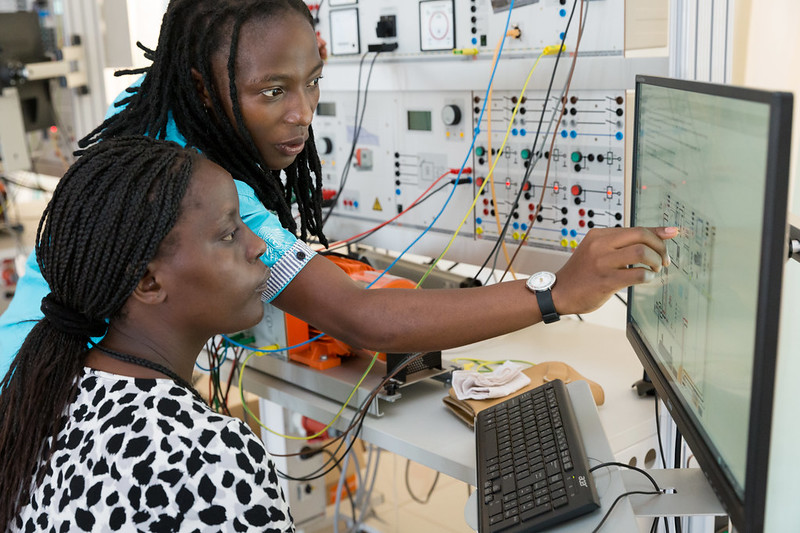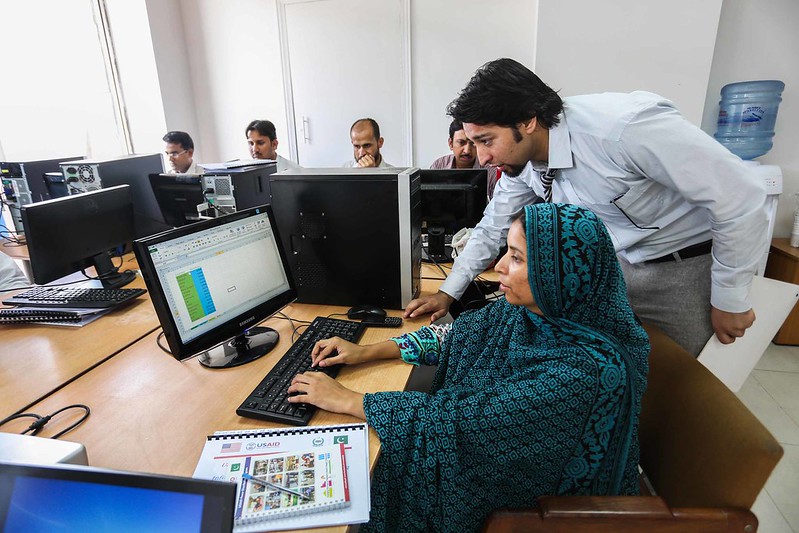Recommended
In a recent CGD note,“Empathy and Client Relationships in Development Finance,” we emphasised the importance of development finance institutions (DFIs) investing in face-to-face contact and dialogue with their clients to build the empathetic relationships needed to deliver development outcomes. But, in the era of COVID-19, did we overstate our case? Could DFIs conduct the business of development finance without leaving home, without flying to emerging markets, without meeting clients face to face? What have our experiences with remote work taught us about the impact of replacing in-person connection with interactions filtered through technology?
A personal perspective: Shifting to remote work as the EBRD president
In my (Suma Chakrabarti’s) last months as president of the European Bank for Reconstruction and Development (EBRD), mid-March to early July 2020, this is what I had to do as the COVID-19 pandemic led to lockdowns in the UK, where EBRD has its headquarters, and in EBRD’s countries of operation. From the study of my house in Oxford, the video link became my mode of interaction for all parts of my job: meetings with presidents and prime ministers on EBRD’s response to the pandemic and on the need for further policy reform in their countries; with my management colleagues to make executive-level decisions relating to both the crisis and business as usual; taking the temperature with staff at town halls; chairing the board of shareholders; attending international “gatherings”; making speeches; and giving media interviews.
I found that I could perform my role well enough while working in this remote fashion. And, similarly, my colleagues at EBRD could be effective and achieve record levels of lending in the first half of this year (over 5 billion Euros), when staff were mostly working from home.
This experience challenged my assumptions. I began to wonder whether DFIs can reengineer their business model permanently, so that remote working is the default way of operating. Think of the financial savings as expensive and sizeable offices are no longer required. And think of the savings in carbon emissions as DFIs go to an emerging market by video, not by plane.
The world has changed, and post-lockdown, we should expect more of a hybrid in the way DFIs work, between being at home, in the office, and in the countries we support. But has it changed so much that DFIs can be just as effective at their job of maximising development impact by working only from home? Probably not.
I could only have been reasonably effective in the role of EBRD president during this period of remote working because it came at the end of my eight years in office, during which time I had built empathetic relationships with both management and staff of the organisation and with the political leadership of the EBRD’s countries of operation. In short, I was able to leverage, in lockdown, the investment already made in building empathetic relationships with the leaders of EBRD’s countries of operation, with my management colleagues, and with staff in general. Similarly, EBRD staff were effective during this period because of the empathy investment already made in their relationships with existing clients. They could call up their private sector, municipal, and state clients and discuss emergency liquidity needs and associated loan agreements.
Why only “reasonably effective”? Because empathy also evolves in the moment. On screen, I found it much more difficult to read the body language of my interlocutors and take the nuances and flow of the conversation beyond the script.
Technology and empathy: What does the research show?
Research shows that in online communication, such as in working from home, the experience of empathy is indeed often compromised. The ability to produce an empathetic response requires understanding the perspectives, emotional states, and non-verbal cues of others. Studies confirm what many of us have found in this time of online meetings: it is more difficult to read social cues over video calls—this is a widely shared experience in video and text communication, leading to compromised empathetic abilities. Qualitative studies also find that prolonged time online can limit our attention spans and cause mind-wandering, again compromising empathetic capabilities and the ability to pay attention to, listen to, and understand others. Overall, studies find a negative relationship between technology and media use, and empathy.
Empathy also affects emotional contagion, or the automatic and universal emotional process where emotions are transmitted by verbal and non-verbal behaviours and expressions between one person and another. Evidence has shown largely that the contagion of both positive and negative emotions can have positive effects: positive emotions can promote creative problem solving, efficiency in decision making, and thoroughness and effort in interesting or pleasant tasks, while negative emotions dissuade individuals from distracting themselves, encourage them to engage more in elaborating their message, and motivate them to change the situation or mood for the better. Text-based communication lacks many of the mechanisms needed for emotional contagion. While video-based communication has a more complete experience, calls involve fewer opportunities for rapid matching of emotional reactions and mimicking of body posture.
After Hurricane Sandy hit the East Coast of the United States in October 2012 and disabled much of the communications infrastructure, researchers explored the effect of decreased technology use on people’s behaviours and emotions. After limited or no technology use from anywhere between a few days and several weeks, participants cited increased mindfulness, or focused attention on the moment, especially in relationships.
More concerningly, a notable study found a profound decline in the empathy of adolescents between 1979 and 2000 that authors have attributed to increased technology and media consumption and decreased in-person meetings and social visits. It is possible that as we rely more on online communication and technology, declined empathetic capabilities are not just limited to the online interactions themselves, but also create more substantial changes in empathy in technology users.
Fortunately, online communication is not always detrimental to empathy. Studies show that when people working together in a digital environment understand each other’s emotional states, it not only helps them to improve their emotional experiences but is also likely to improve their joint efforts. Teams working together digitally also show improved communication when tools are utilised to update members on the progress status of individual members and the group as a whole. In the experience of online textual communities, the presence of women and faster paced interaction tend to encourage empathy.
Some companies have sought to show that technology does not need to sour business relationships and have integrated empathy into their virtual communication. For example, some customer care companies seek to enrich their relationships by ensuring senior managers affirm their commitment to empathy, understand the ways in which current procedures and systems mediate interactions, and deploy technology to help customers tell their stories and workers and managers to hear them.
Other companies take this another step further through softscaling, fostering emotional connections and using data empathetically. Softscaling involves growing emotional connections among all stakeholders, optimising business processes, and combining data with understanding of local context to make empathetic decisions. A study of five companies that implemented softscaling saw annual growth of between 35-40 percent and large profit margins.
What about artificial intelligence?
Going even further, can technology itself be empathetic? Computer scientists are exploring the development of AI systems capable of perceiving and responding to human emotions with empathy in the field known as “artificial empathy,” also known as “computational empathy.” A project known as Deep Empathy, an effort of the MIT Media Lab, UNICEF’s Office of Innovation, and the London School of Economics, is teaching AI empathy through identifying the characteristics of Syrian neighbourhoods affected by conflict and applying these characteristics to other cities around the world. The researchers ask, “Can this approach—familiar in a range of artistic applications—help us to see recognizable elements of our lives through the lens of those experiencing vastly different circumstances, theoretically a world away? And by helping an AI learn empathy, can this AI teach us to care?”
Artificial empathy is already finding effective use in an app called Wysa, where empathetic AI was able to boost the mood of depressed users. But the study also found that, while artificial empathy could be used to manage barriers, the technology could never replace a mental health professional. The same is true for development finance; real, human, and empathetic relationships cannot be replaced by technological mimics.
Implications for DFIs
The research thus far seems to bear out the view that technology cannot fully replace or mimic the empathetic relationships of face-to-face contact between DFIs and clients. Indeed, it appears that online communication has a negative effect on empathy that can only be mitigated at best.
In a world where there will not be a full return to the face-to-face relationships of pre-COVID-19 days, there are worrying implications for development finance if empathy is neglected in the work-from-home process. Two stand out, one for project finance and one for policy reform:
-
There will be a bias towards financing existing project clients, repeat transactions, and the less complex deals (witness the rise of trade finance, emergency liquidity, and the drop in “green” conditions in projects in the current situation). The difficulty of lending to new clients or in taking equity stakes, where the investment in building an empathetic relationship based on face-to-face contact is crucial, will be exacerbated. Given that development finance is all about stretching the frontier to encompass those locked out of the current system (think female entrepreneurs and underserved regions) or where transformation challenges are greatest (at company and state levels), this bias towards the existing client roster, and most probably of quantity over quality, will mean DFIs being less additional and impactful than pre-COVID-19.
-
There will be a move away from effective policy dialogue. To have a continuous impact on policy thinking in emerging markets requires senior DFI managers to be up to date on the shifts in the local political economy and to engage face to face with emerging market leaders in real-time as the context for the latter’s decisions change. DFIs will struggle much more with transferring their knowledge of what works in which circumstances when their senior teams try to do so by video than face to face. The improvement in governance and investment climates we have seen in many emerging markets over the last two decades is likely to be arrested as policy dialogue atrophies.
So, for as long as empathy is fundamental to the development finance relationship, and if we continue to care most about impact, then there will still be a need to travel to the field, to understand the context, and engage in face-to-face dialogue. Sitting in an Oxford study and staring at a screen will never be the same as “doing development.” Another argument for why the vaccine against COVID-19 will be so crucial if we care about maximising development impact.
Rights & Permissions
You may use and disseminate CGD’s publications under these conditions.






